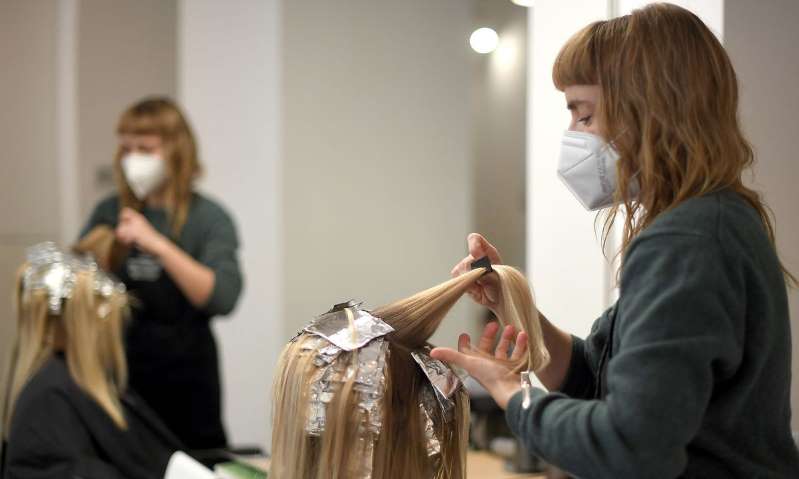
The wage gap between women and men is an important indicator for assessing their equality in society. Political measures aimed at promoting equality cannot avoid looking at the reasons for a wage gap and its developments.
The wage gap between women and men in Austria decreased from 2005 to 2019 (Böheim, Fink and Zulehner, 2021). In 2005 women earned an average gross hourly wage that was around 20.5% lower than that of men. In 2019, women earned an average of 15.3% less than men.
If we take into account differences between women and men in characteristics that could be important for wage levels (school education, work experience, occupation, etc.), we get what is known as the “adjusted” wage difference. We estimate this to be between 9 and 17%, depending on the statistical method used. But the adjusted wage gap has also narrowed: in 2019 it was between 6 and 11%.
Note: Statistics Austria, EU-SILC 2005-2019. Figure 2 from Böheim, Fink and Zulehner (2021, https://www.wifo.ac.at/wwa/pubid/66916). The mean wage gap is the unadjusted wage gap, ie without taking into account differences in characteristics such as education, experience or sector. The adjusted wage difference is the remainder that remains when such characteristic differences are taken into account. Public and private sector.
Reasons for the decreased wage gap
The main reason for the decline in the wage gap is that women and men have become more similar in the characteristics that are in demand in the labor market. In some cases, women have even overtaken men. In 2001/02, 50% of all degrees from domestic students were women; in 2017/18 it was already 55% (Statistics Austria, 2021).
Despite all the adjustments, there are still significant differences that lead to wage differentials. A noticeable difference can be seen in the choice of profession. Among young women, the most popular apprenticeships in 2019 were retail (22% of all female apprentices), office clerk (11%) and hairdresser (8%). Among young men, the three most common apprenticeships in 2019 were metal technology (13% of all male apprentices), electrical engineering (12%) and automotive engineering (10%). The differences in the choice of occupation lead to wage differences as early as the first year of the apprenticeship, because the apprenticeship remuneration in the occupations chosen by young women is typically lower than in the occupations chosen by young men.
Similar differences can also be seen in the choice of course. In 2005, 10% of all male and 8% of all female students were enrolled in a degree in mathematics, engineering, natural sciences or technology (MINT). In the 2017 winter semester, 14% of all male and 11% of all female students studied in a MINT subject. These differences also lead to wage differences, as MINT graduates typically receive higher wages than graduates from other courses.
Mothers take part in the labor market more often than 15 years ago and also take shorter parental leave, but they leave the labor market longer than women in Scandinavian countries (Kleven et al., 2019). They therefore gain less work experience on average than fathers and this not only leads to lower incomes, but also to lower hourly wages.
Wage differences can also arise from systematic differences in wage negotiations or from discrimination against women by employers, for example on the basis of social norms, prejudices or legal reasons (e.g. prohibition of night work, etc.). Here, too, our investigations and further scientific evidence show that the importance of these factors has decreased.
Covid-19
The impact of the pandemic on the wage gap cannot yet be assessed. Women are affected differently by the crisis than men and these differences could contribute to the wage gap increasing rather than decreasing in the coming years. Women initially lost their jobs less often than men, but the losses were concentrated in a few economic sectors that are important for women's employment (Bock-Schappelwein, Famira-Mühlberger and Mayrhuber, 2020). At the end of 2020, women were more affected by unemployment than men (Bock-Schappelwein, Huemer and Hyll, 2021). If these sectors of the economy create jobs again after the crisis less frequently than other sectors, then relatively more women than men will change sectors. Such industry changes typically lead to lower wages.
The double burden of work and care duties, especially in the “home office”, also affects women more than men. According to their own statements, during the Corona crisis, women increased their time for housework, and particularly for childcare, more than men (Berghammer and Beham-Rabanser, 2020). If women are therefore less able to take part in further education or training courses, are less able to maintain professional networks, etc., then a relative loss of wages can follow for this reason.
It is therefore to be feared that the wage gap between women and men will rise again in the coming years. Accompanying measures are therefore necessary so that the developments of recent years are not lost. This includes in particular political measures that allow mothers and fathers to participate in working life; Promotion of transition and re-entry into working life; Measures for further training and promotion of qualification measures; and cushioning the negative effects of home schooling and distance learning, especially the different effects on boys and girls.
Swell:
Berghammer, C., Beham-Rabanser, M. (2020), “Where's the time? Paid and unpaid work by women and men in the Corona crisis”, https://viecer.univie.ac.at/corona- blog / corona-blog-posts / blog57 /.
Bock-Schappelwein, J., Huemer, U., Hyll, W. (2021), “Employment 2020: Balance after one year of the COVID-19 pandemic”, WIFO Research Briefs 1/2021.
Bock-Schappelwein, J., Famira-Mühlberger, U., Mayrhuber, C. (2020), “COVID-19: Economic Effects on Women”, WIFO Research Briefs 3/2020.
Böheim, R., Fink M., Zulehner, C. (2021), The development of the wage gap between women and men in Austria from 2005 to 2019, WIFO Research Briefs 2/2021.
Kleven, H., Landais, C., Posch, J., Steinhauer, A., Zweimüller, J. (2019), “Child Penalties across Countries: Evidence and Explanations.” AEA Papers and Proceedings, 109: 122-26.
Statistics Austria (2021), “Degrees of degree courses by academic year by gender”, statcube.at, requested on: February 19, 2021.

